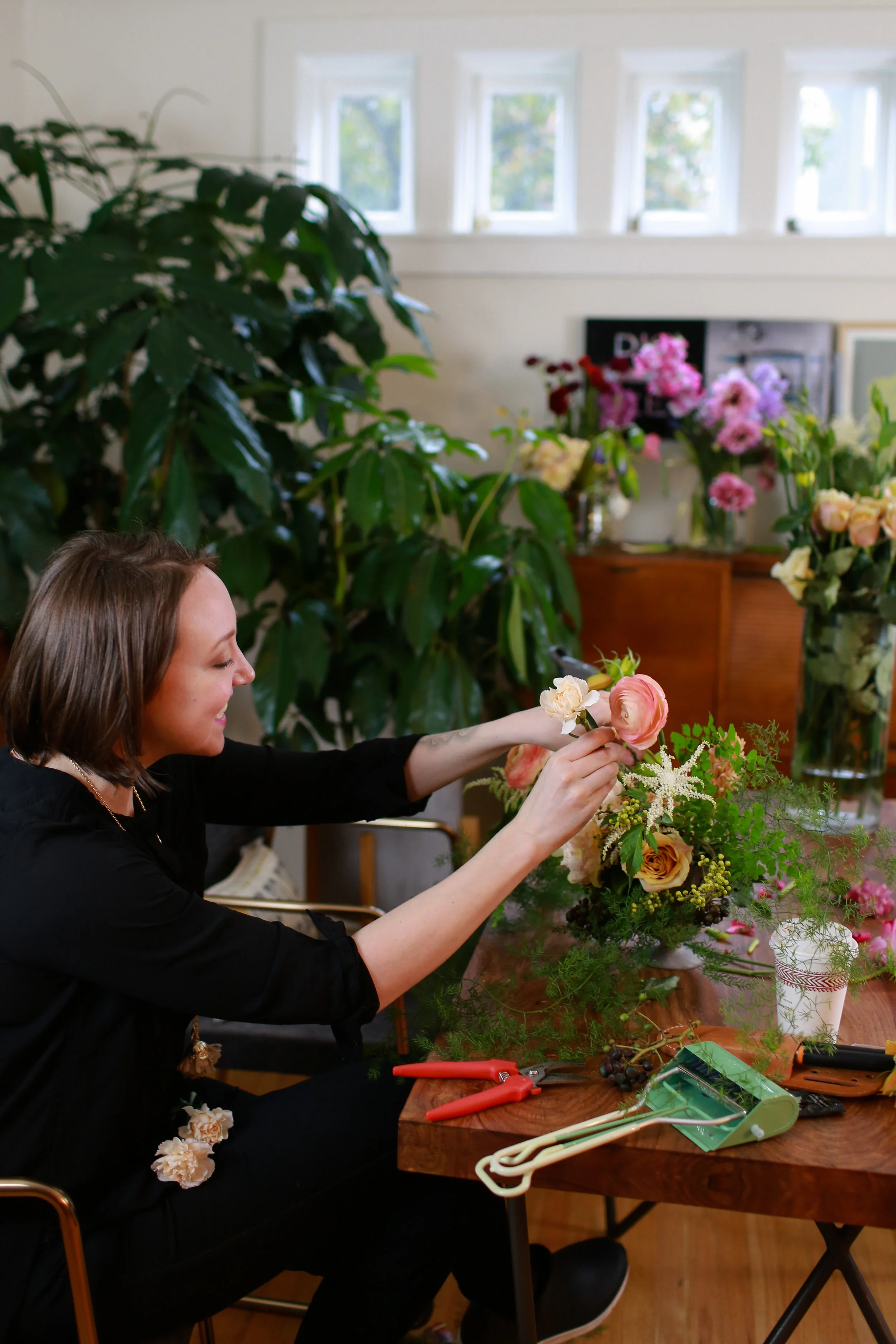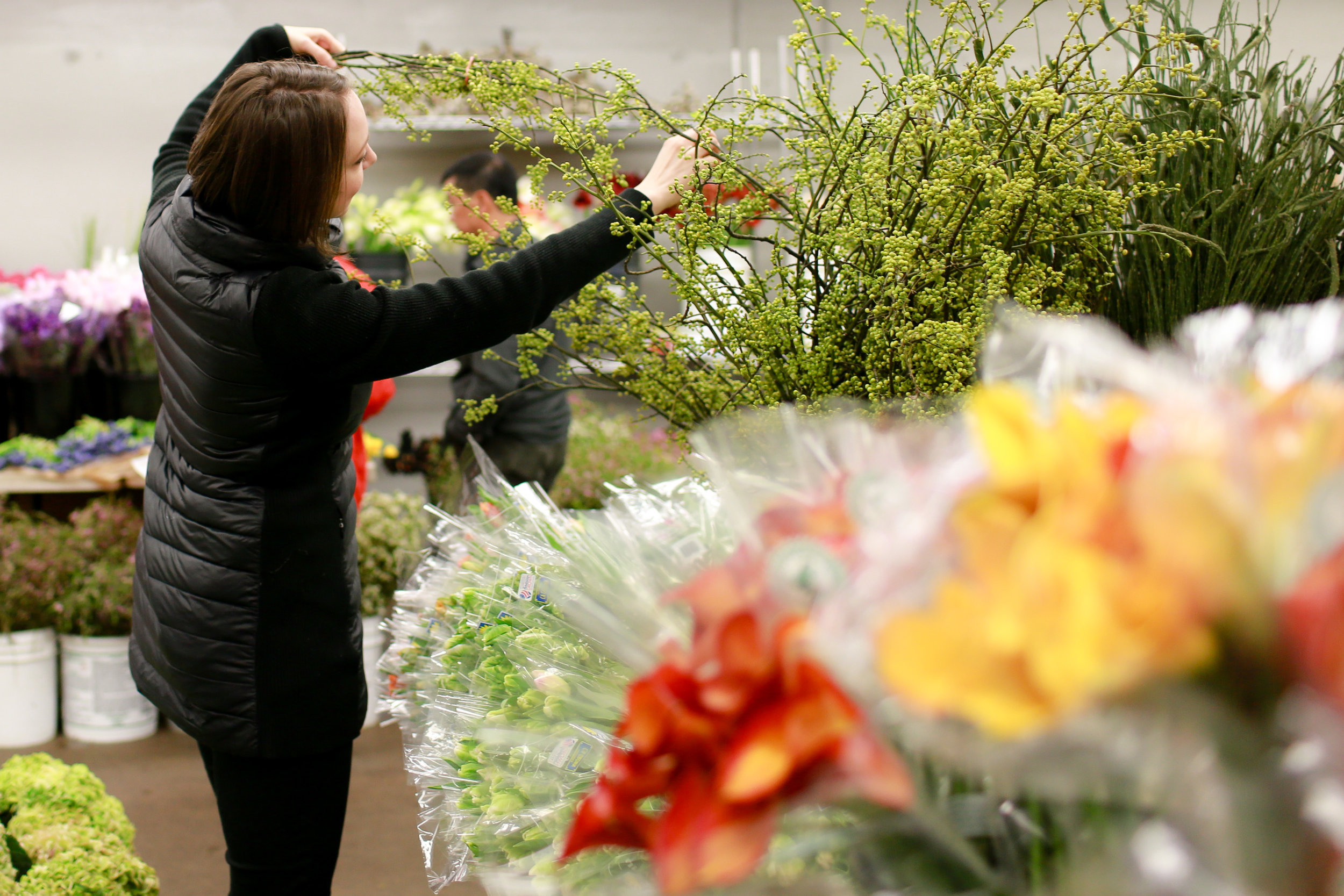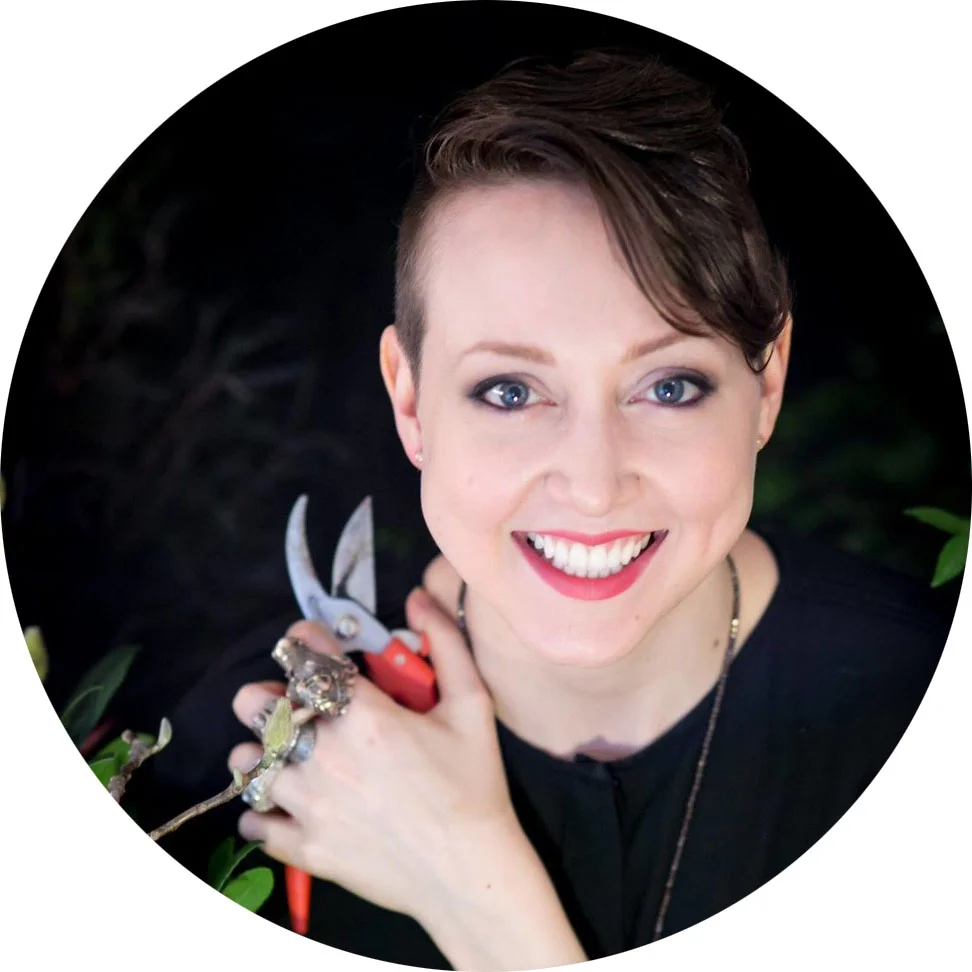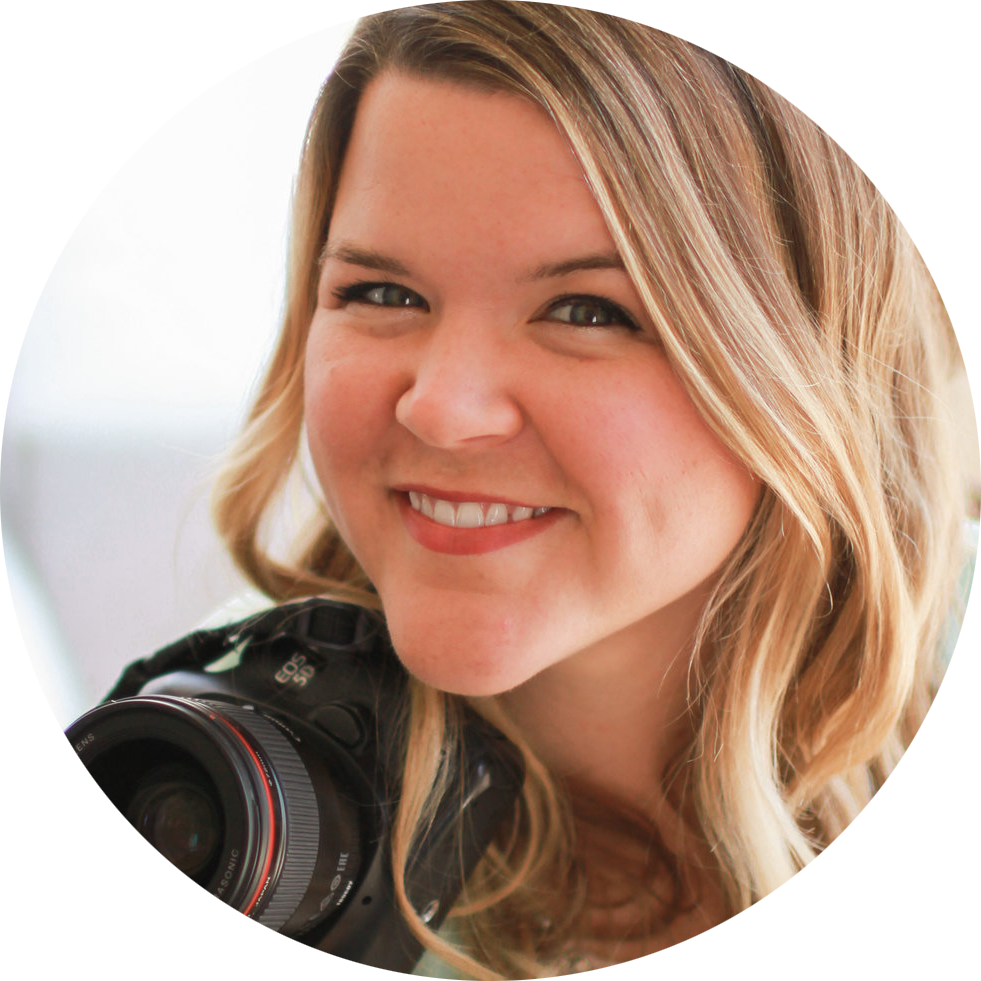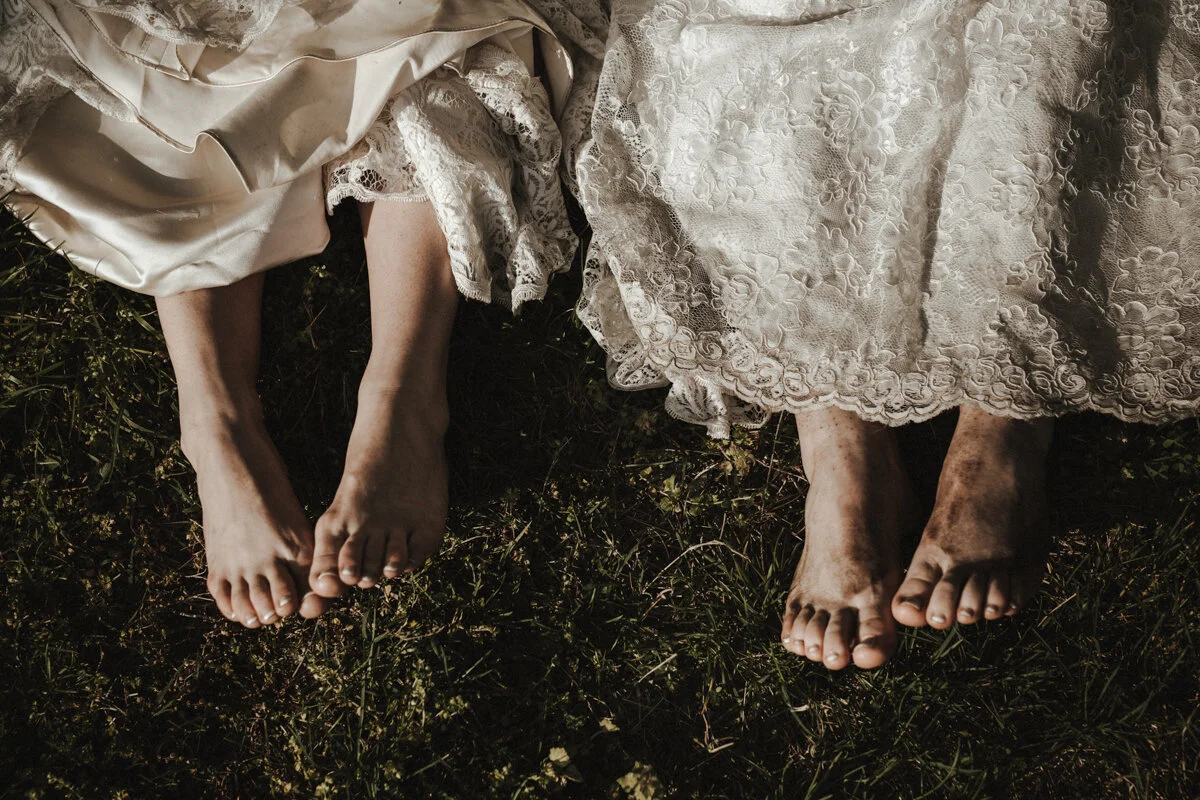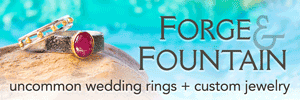Ask A Professional Florist // Why Do Wedding Flowers Cost So Much?
/All photos by Kate Knox
Blumenkiss is a wedding floral designer based in San Francisco. We spoke to owner and lead designer, Cora Hardin, who sheds some light on the mysterious pricing of wedding flowers.
Q: Pricing for wedding flowers is often confusing to couples—sometimes even a shock. Often, couples budget a lot less than floral designers charge. Why do you think that is, and what do you wish couples knew about it?
A: The two main components that impact price are the flowers themselves and the labor to design, transport, and deliver or install the flowers.
Labor
On average, I spend 1-2 hours working on each centerpiece. That’s on the design alone without accounting for the time spent purchasing the flowers, cleaning them, and delivering them. For wedding flower design, logistics can take up to 50% of the total time. It’s a lot more manual labor than most people realize since the end goal is for the result to look effortless, and thus most of the labor happens before or after the wedding behind the scenes.
Materials
What surprises many couples is also that the cost of flowers themselves vary greatly. The flowers you see most often on Instagram, Pinterest or in wedding magazines are almost exclusively high-end, expensive flowers. You’ll notice that they look quite different from the flowers available at grocery stores. Examples of high-end flowers are those soft, romantic garden roses, lilacs, peonies, ranunculus, sweet pea, and lily of the valley, but the list goes on. Even with those, what you see are often not the “standard” kind, but blooms imported from Italy or Japan, or grown in small numbers at a local farm that even at wholesale cost can exceed $5 per stem. A designer might use 30 or 40 of those in a centerpiece. If you add that up in terms of retail pricing and have one large arrangement each on 12 tables, you can see how even before taking into account the labor costs and the value of your designer’s skill and expertise, the cost of raw goods alone is already very high.
Fragile Blooms
In addition to the quality, the hardiness of flowers will also impact the amount that the designer will need to order as back-up and the difficulty of designing with them. With fragile flowers, last-minute designing on site may be necessary, which increases the number of staff needed on the day of the wedding. It increases the difficulty of the overall design process and mechanics, as you have to leave space for these flowers in the design process so you can pop them in on site at the last second or design entirely from scratch during the venue set-up window. For example, dinner plate dahlias or hellebore are breathtaking and incredibly popular for weddings. However, they are also incredibly difficult to keep alive.
Installations
That’s not even getting into large arches, XXL flower urns, or hanging flower installations. The photos of weddings you see published online are usually big budget weddings. Flower walls, for instance, are stunning—absolutely, but one of those alone could cost $10,000 and up. What you don’t see with those is that they take a huge team many hours to complete, in addition to the thousands of flowers that are needed to make them. I always wish pricing were more transparent on such beautiful posts because as a floral designer we get the difficult task of having to crush those big dream wedding visions based on the couple's available, real-life budget.
Budget
Because the industry can appear to be quite opaque to couples, I nevertheless try to provide my prospective clients with some clarity by posting both a minimum and a more common total cost as a general point of reference. In the end, though, it’s still hard for someone to estimate what their wedding flowers would cost without requesting a customized quote.
Q: How much money should couples plan to spend on flowers?
A: I strongly believe that there is no “should.” I’m personally not much of a traditionalist, so I think everyone ought to celebrate their wedding the way that is most meaningful to them—small or large, formal dinner or elopement, big budget or shoestring. You do you, and you decide what is important for your wedding within the budget and the vision you have. Some people love flowers, some people don’t care that much, and it’s important to know where you stand and what you can afford, so you can allocate your budget appropriately and find the correct floral designer for that price range.
That being said, such an answer doesn’t help alleviate the budgeting confusion that surrounds more formal weddings:
DIY/Grocery Store
I’ve often read the advice online that you should plan for 10% of your budget to go to wedding flowers, and I think though very low, that can be appropriate if you do not want Pinterest-worthy flowers. In that case, your flowers may have to be DIY, which is a huge effort, or look closer to small, simple grocery-store flowers.
If you want the fine-art-inspired, lush and varied, high-end flowers expertly arranged into what is essentially a 3d sculpture, like the showstopper table arrangements you come across in online inspiration photos, I advise planning closer to 25% of your budget for them. Though my minimum is $2,500, for example, that doesn't cover weddings as elaborate as you most often see featured online. I have found that for many couples, there is a mismatch between the imagery posted for inspiration and the expected budget allocation. From the inquiries I have received for weddings in the San Francisco Bay Area, the inspiration boards and services requested based off of typical Pinterest or Instagram content, including a wedding arch or other larger ceremony or reception decor, have led to an average quote between $6,000-$10,000, which has generally far exceeded the planned budget for the couple.
Q: In order to get an accurate quote, what information will a floral designer need?
A: At minimum, this information is a good starting point:
Wedding date, location, and time
Budget
Size of bridal party
Size of guest list, shape of tables, and seats per table
Color scheme and inspiration photos
Anything floral in addition to or that deviates from standard personal flowers and centerpieces
Q: Do you have suggestions for ways to lengthen the use of wedding flowers past the wedding?
A: If you want to lengthen the use of the flowers past the reception, no matter your budget, there are lots of different options for you to do so. For example, in the San Francisco Bay Area, you can donate them to "Random Acts of Flowers," a non-profit organization that repurposes flowers by re-gifting them to recipients in healthcare facilities. Such organizations exist in several places around the US and world. You may even be able to get a tax write-off for the donation, but check with your tax preparer on the specific rules for that. Alternatively, you can give them as a table prize or thank you gift to your bridal party and family after the wedding is over, or place them on the graves of loved ones the next day. Lastly, consider discussing with your floral designer whether they offer using some potted succulents, cacti or other living plants, which can be reused in your home afterwards.
Q: As a floral designer, what is your aesthetic? What inspires you?
A: My natural inclination is toward bright, vivacious colors. As a quirky, creative person, I I like things a bit eccentric, so no surprise there. However, since working with couples planning their weddings, I’ve come around to fully embrace more neutral color palettes, which exude so much classical romance and a more vintage vibe. I truly get excited about both now.
Regardless of the color palette, though, my signature is that my arrangements are organic-looking, as if they are still growing. I love using branches and trailing greenery, to excess perhaps, to keep a bit of the wild and untamed look of nature rather than cutting everything into a strict form. Nature is so beautiful on its own that I try to emphasize that intrinsic beauty, not mold or mask it. Though the aesthetic in the rest of my life is quite simple and mid-Century modern, in flowers I love the celebratory look of designs that are a bit over-the-top—that seem to burst with life.
I’m most inspired by nature—by the colors, shapes, movement and sounds all around, not just in flowers, but in anything from a breathtaking California sunset to the crunch of snow. There is so much beauty around if you take a moment to slow down and truly notice it. As far as flowers themselves, one of the most inspiring things for me is when I have free range to design anything in my imagination with the best that is available at the San Francisco Flower Mart. I get giddy when I come across an intriguing shade and flower I haven’t seen, an intoxicating scent, or that one strange branch that will deliver a wow-effect. Let me loose at the market, and you won't regret it.
Photo by by Zaza Weissgerber
Cora Hardin of Blumenkiss is an event floral designer based in San Francisco who serves weddings throughout California. Her floral style is wild and romantic, specializing in custom designs that play with overgrown, organic shapes and bright colors.
Kate Knox is a destination wedding photographer based in San Francisco, California, who specializes in bright, clean, colorful imagery. With each wedding and photo shoot, she strives to deliver galleries with a balanced blend of classic portraits, candid moments and gorgeous detail shots, all coming together to tell the story in the best way possible. Whether it's working near her current home in California, back to her roots on Florida's Gulf Coast, or anywhere in between, she is often found on the road to her next adventure.

